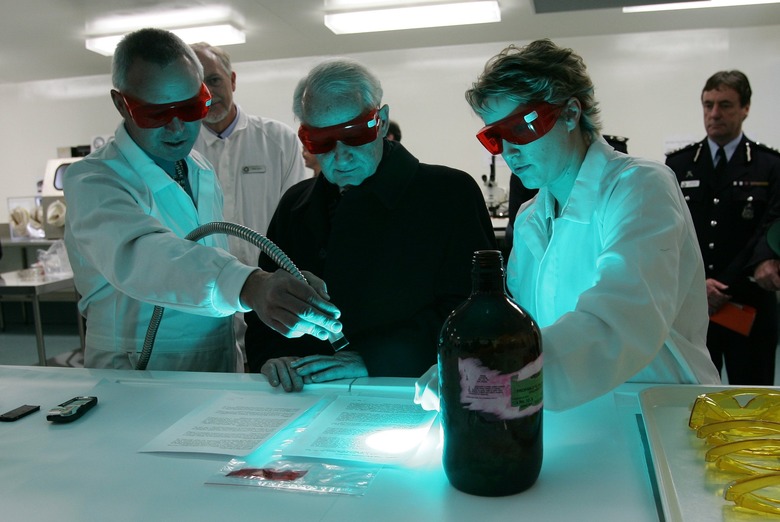Homemade UV Sterilizer
You want to keep your home germ-free. Unfortunately, antibiotic-containing soaps give way to bacterial "superbugs," bleach ruins septic tanks and commercial cleansers can be harmful to the lungs. An ultraviolet (UV)-light-based sterilizer lets you avoid these pitfalls; however, you must first take a few simple safety precautions.
UVC "Germicidal" Bulbs
UVC "Germicidal" Bulbs
The term "ultraviolet (UV) light" refers to any light photon whose wavelength is between 10 nanometers (nm) and 400 nm. Currently, there are three levels of UV bulbs available to the general public: UVA (315nm to 400nm), UVB (280nm to 315nm) and UVC (100nm to 280nm). Commonly known as "short wave" or "germicidal," UVC bulbs are effective at killing bacteria as well as mold, yeast and other disease-causing fungi.
Therefore, you first step in building a UV sterilizer should be to purchase a UVC germicidal bulb. While supermarkets and home improvement retail chains often sell UV bulbs, these items are typically UVA and UVB bulbs used for growing plants or keeping reptiles. You'll have far better success locating and purchasing a genuine UVC bulb online, where wholesale retailers typically provide reliable bulbs for a good value and many lighting or scientific supply websites can get you the right product.
Virtually all UVC bulbs are low- or high-pressure mercury fluorescent bulbs, which use pin electrical sockets as opposed to the screw-in sockets that incandescent bulbs use. Once you choose the germicidal bulb you want to use, read its technical specifications to determine what sort of socket you'll need to buy.
Protection
Protection
Short wave UV radiation kills microorganisms by penetrating their cell walls and breaking open the thymine nucleotides in their DNA. Once the thymine (and the genetic code) is damaged, the microorganism loses its ability to reproduce or even survive. When any UV radiation (short wave included) strikes human skin, it also can penetrate the cell membrane and damage the thymine molecules in our DNA. This damage causes a spontaneous mutation that can transform normal cells into malignant, cancerous cells. In fact, this is one of the proposed mechanisms by which prolonged, unprotected exposure to the sun can cause melanoma and other skin cancers in humans.
Therefore, you must incorporate safety measures into your design which prevent UV radiation from escaping. For example, try using a cylindrical, 12- by 18-inch "popcorn tin" container made from aluminum as the body for your sterilizer. Drill a small hole in the lid to thread the power cord through and then seal any cracks of light with an aluminum foil duct tape. Plug the bulb into the socket (which should be hanging from the bottom side of the lid); place the items to be sterilized inside the container, fit the lid firmly in place and the plug in power cord into the wall outlet. Let the bulb run for one minute and then unplug it.
References
Cite This Article
MLA
Pasquesi, Andy. "Homemade UV Sterilizer" sciencing.com, https://www.sciencing.com/homemade-uv-sterilizer-5852021/. 24 April 2017.
APA
Pasquesi, Andy. (2017, April 24). Homemade UV Sterilizer. sciencing.com. Retrieved from https://www.sciencing.com/homemade-uv-sterilizer-5852021/
Chicago
Pasquesi, Andy. Homemade UV Sterilizer last modified March 24, 2022. https://www.sciencing.com/homemade-uv-sterilizer-5852021/
